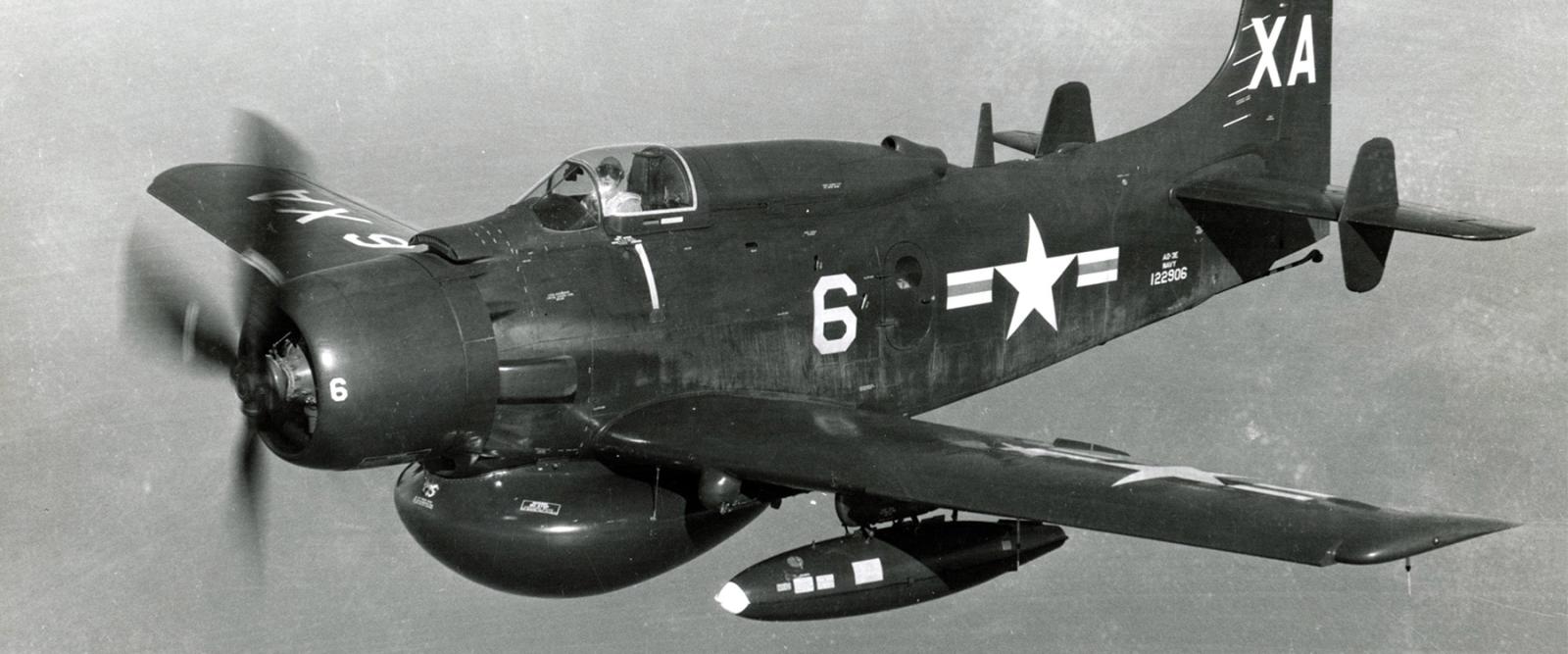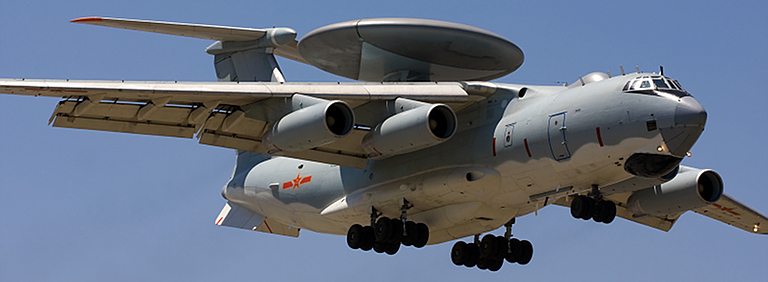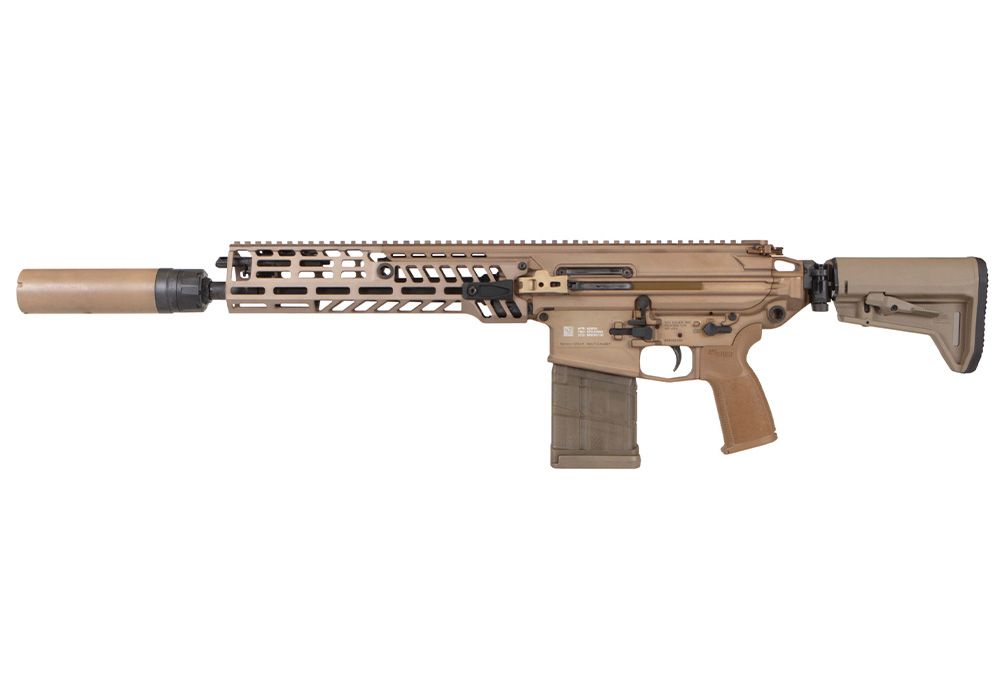
Suomi on liittynyt NATOon ja lienee siis hyvä puuttua huhtikuussa 2023 esiin tulleeseen uutiseen tuulivoimatuotannon ja aluevalvonnan yhteensovittamisesta. Mietintö puhuu “tutkakoneen hankkimisesta ilmavalvonnan tarpeisiin”. Ilmaan heitettiin SAABin HX tarjouksesta tuttu komponentti Global Eye . Tässä aiheesta Wikipediassa kolmannella kotimaisella. Muitakin vastaavia maailmalla on, vaikkapa USAn laivaston E-2D Advanced Hawkeye tai Israeli Aircraft Industiresin EL/M-2075 Phalcon.
Itselleni GLOBALEYE oli SAABin HX-tarjouksen vahvin osa: se olisi tuonut Suomen ilmavoimat vihdoin osaksi länsimaista ilma-asetta ja ilmataistelufilosofiaa. Toki nykyäänhän Venäjänkin ilma- ja avaruusjoukot käyttävät AEW koneita, mutta Länsimaissa niiden hyödyllisyys on huomattu jo Kamikaze lentokoneiden torjunnassa. Itse asiassa Lentävästä linnoituksesta tehtiin PB-1W versio, jossa oli rungon alapuolella AN/APS-20 tutka ja “air combat info center” eli käytännössä taistelunjohtaja ja hänen radiomiehensä. (Lisää informaatiota aiheesta TÄÄLTÄ) Konsepti oli “aika hyvä” ja niin USAlla on ollut sittemmin katkeamaton jatkumo AWACS koneita, joista seuraavaa E-7 Wedgetailia ollaan ottamassa juuri käyttöön.

Tilanne Suomen naapurustossa
Ruotsin ja Puolan ilmavoimat ovat tilanneet jo SAABin Airbourne Early Warning and Controll koneita, Ruotsi korvaamaan vanhat Argusit ja Puola uusina hankintoina. Itse asiassa Puola on pitänyt asiaa niinkin kiireellisenä, että he ottavat käyttöön Ruotsista ostettavia kunnostettuja SAAB 340 Arguseja uusilla tutkilla. (Juttu luovutuksesta 29.9.2023) Ruotsin puolustusvoimat itse asiassa nappasivat kaksi Suomeen HX-tarjouksessa varattua GLOBALEYEtä, kahden itse tilaamansa tilalle. NATO on myös prosessissa korvamaan E-3 Sentryt uusilla koneilla SAAB on mukana tarjousprosessissa, samoin kuin mainittu USAN E-7. Prosessi on melko huomattava, siinä korvataan 16-18 konetta.
Venäjäkin on, kuten mainittu, konstruoinut oman Beriev A-50 AEW koneensa, josta ollaan ottamassa uusi A-100 versio käyttöön tällä vuosikymmenellä. Samoin Kiinalla on ollut yritystä saada oma konstruktionsa jaloilleen, muunmuassa ostamalla israelilaista tekniikkaa, mutta projekti kaatui USAn vientirajoituksiin. Venäjänkin osoittaa siis halua päästä pois perinteisistä kiviluola taistelunjohto keskuksista ja maatutkista liikkuvampiin tutkiin.

Suomi on siis tilanteessa, jossa VOI olla vaikea saada AEW koneita nopeassa tahdissa, kun tilanne kiristyy Venäjän kanssa, joten joudumme luottamaan tässä Ruotsin apuun. Suomella ja ruotsilla on yhteiset meri- ja ilmavalvonta kuvat, joten ainakin jonkinmoinen lisätuki ilmavalvontaan on jokatapauksessa saatavilla. Edelleen Suomi NATO maana on saamassa tukea tilanteessa NATOlta, mutta peitto ei ole Suomessa 24/7.
Edelleen on kuitenkin ilmeistä, että Rajavartiolaitoksen valvontakoneiden tehtävät ja sensorit ovat sen verran erilaiset, että MVX hanketta ei kannata/voi ympätä ilmavalvonta-asiaan kiinni. Joskin uusien MVX koneiden varusteet ainakin jollain tasolla pystyvät samaan, niillä ei ole kaikkia AEW koneen kykyjä. Toisinpäin AEW kone kyllä lisää Rajavartiolaitoksen mahdollisuuksia merivalvontaan

Miten Suomi on nyt päätymässä AEW kaluston hankintaan?
Koskapa Itä-Suomen ja -Lapin tuulivoimahankkeet tekevät ilmavalvontaan suuria katve-alueita ja tähän asiaan on kantaa ottanut selvitysmies, kenraali evp. Arto Rädyn tuulivoimaselvitys 15.3.2023. Täällä hieman kryptisesti kehoitetaan turvaamaan aluevalvonnan edellytykset ja parantamaan sensorien kattavuutta. Ongelmaksi muodostuvat suurimpien tuulivoimaloiden jopa 250 metriin ulottuvat lavat: Nämä tekevät välkkeellään suuria katve-alueita valvontaan, kuten puolustusvoimat ovat usein huomauttaneet. Tiivistettynä tuulivoimapuistot siis avaavat käytäviä ilmavalvontaan ja sitä kautta ilmapuolustukseen.
Ongelma on periaatteessa hyvin yksinkertainen: Meillä on olemassa keskivalvontatutka Thales-Raytheon Systemsin Ground Master 403 jonkin vaaran päällä. Läheisellä vaaralla, kilometrin päässä, täsmälleen samalla korkeudella on tuulivoimapuisto, jonka 10 generaattorin lavat huitelevat mainittua 250 metriä tutkaa ylempänä. Tutkan vaakakantama on 500km ja pystykantama 30km. Tuulivoimapuiston suuntaan syntyy katvealue, jonka korkeus on 15km kohdalla jo 3,2km. Kuvitellaan, että kaikki tapahtuu lineaarisesti eli noin 75km kohdalla korkeuspeitto on jo 16km eli enemmän kuin oli HX hävittäjien lakikorkeus. Maahan kaareutuu kylläkin alta pois, joten itse asiassa katve on huomattavasti suurempi. Kuitenkin jo 75 kilometriäkin on jo reippaasti tutkaan hakeutuvien ohjusten kantamalla. (Esimerkkinä vaikkapa itäisestä arsenaalista Kh-31 Krypton, kantama noin 110km). Groundmaster tutka on kuorma-auto lavetilla, joten kovin taistelukestävä se ei ole, mutta se voi liikkua ja väistää vastatutkatoimintaa ainakin jonkin verran. Tutka on kuitenkin niin suuri, ettei sillä voida mitata liikkeessä.
Toinen tapa, jolla maassa olevien tutkien taistelukestävyyttä voidaan lisätä, olisivat erilaiset CIWS/ lähi-ilmapuolustus järjestelmät, mutta niiden torjuntakyky on mahdollista kyllästää. Vaikka sinänsä torjunnan kyllästäminen ei ole taloudellisin tai elegantein tapa hoitaa tehtävää, on se kuitenkin sangen tehokas tapa hoitaa ongelmallinen tutka pois päiväjärjestyksestä. Tähän suuntaa ei Suomessa ole ilmeisesti menossa.
AEW koneiden yleiset ominaisuudet
AEW-C /AWACS koneiden tärkein ominaisuus on niiden tutka. Aikaisemmin suuressa ovaalissa pyörivä PESA tutka, mutta nykyään elektronisesti ohjattava AESA tutka. Uudemmissa koneissa jo Gallium elektroniikalla toteutettuna. Tutkana on yleensä noin 2-3 GHz alueella, NATO E-taajuusalue, toimiva voimakas lähetin. Tällä taajuudella tutkan aallonpituus on 10-15 cm, joka antaa säteille erittäin hyvän kulmaerittelyn, mutta toisaalta ei läpäise ilmakehän kosteutta kovin hyvin. Tutkilla on siis hyvä erottelukyky, mutta ne eivät näe kovin hyvin hyvin vaikkapa sateen läpi. Edelleen tutkan aallonpituus vaikuttaa ratkaisevasti antennin kokoon. Karkeasti mitä suuremmat aallonpituudet ja läpäisy, sitä suurempi antenni.
Länsimaissa ei ole ollut toistaiseksi suurta tarvetta panostaa häivekoneiden havainnointikykyyn, mutta, yleensä, koneiden häiveominaisuudet on optimoitu noin 7-11 GHz taajuutta, X-taajuus, ja noin 2,5-3,8 cm aallonpituutta vastaan. Samasta syystä uudemmilla Venäjä ja Kiina panostavat multistaattisiin ja pitkien aallonpituuden tutkiin.
Tässä jutun juurena olevat AEW/C koneet havaitsevat häivekoneet tutkiensa pidemmän aallonpituuden takia jo “kohtuullisen hyvin”. Lisäksi GLOBALEYE ja HAWKEYE pystyvät ohjaamaan muiden ampumia ohjuksia maaliin. Esimerkiksi siis AEW kone havaitsee vihollisen häivehävittäjän, jota esimerkiksi ohjusilmatorjuntapatteriston tulenjohtotutka ei voi havaita, mutta AEW kone ottaa ammutut ohjukset ohjaukseensa laukaisun jälkeen ja hoitaa maalinosoituksen ja tuhoamisen “kill chainissa” Kysyin tätä asiaa SAABilta, ja he kertoivat että GLOBALEYEllä on tämä kyky. Tietenkin tämä kill-chain vaatii että ketjun muilla palikoilla on sama kyky, mutta minun on vaikea kuvitella että uudenkarheilla “Daavidin lingoilla” tätä kykyä ei olisi. (Juttu hankinnasta). Edelleen samantyyppinen killchain saadaan syntymään myös F-35 ampuvana osana, jolloin “salamoiden” on helppo hiipiä hyvään ampuma-asemaan ilman paljastavia elektronisia emissioita.
GLOBALEYE on tarjolla myös NATOn E-3 AWACS korvaajaksi E-7 Wedgetailin lisäksi. Täytyy toivoa, että Ruotsi ehtiin NATOon enne hankintapäätöstä, että säästytään poliittisilta lehmänkaupoilta siihen tyyliin että ei-NATO maa ei voi tarjota. Operaattoripaikkoja GlOBALEYEssä on 5, joten se pystyy ohjaamaan periaatteessa viittä eri tehtävää yhtä aikaa. Toki nykyisillä datalinkeillä 5 operaattoria ilmassa ei ole rajoite, vaan operaattoreita voi ola luolissa maassa lisää, ihan niin monta kuin tarvitaan.
GLOBALEYE siis pystyy jakamaan ilma-ja pintavalvontatukiensa kuvan suoraan puolustusvoimen tilannekuvaan, joten sen tuottama data, näkyy heti kaikille, ja on siten heti käytössä ainakin operationaalisella tasolla. Tämä on tärkeää siksi, että maalit tuppaavat ilmestymään ja katoamaan nopeasti, jolloin järjestelmän täytyy reagoida nopeasti viholliselle tappioiden tuottamiseksi. Vaikkapa niin, että GLOBALEYE havaitsee Iskender laukaisun Kannakselta. Data näkyy reaaliajassa operaatiokeskukselle, joka tekee päätöksen torjunnasta. Daavidin linko alkaa saada maalidataa, ja laskee kohdan, jonne ohjus ohjataan. laukaisu tapahtuu, ja kun Iskender saapuu kantamalle se tuhotaan.
Kuten mainitsin, Suomi saa NATO maana osansa NATOn yhteisestä AWACS katteesta, mutta se ei ole välttämättä paikalla kun sitä tarvittaisiin. Koko NATOn koko ajatellen Turkista ja Kreikasta Nordkapille, matka on niin pitkä, että maan kaarevuus alkaa vaikuttaa jo tutkakoneen korkeudellakin. NATOlla on 17 koneen AWACS laivasto, mutta aluettakin on melko paljon, joten Suomelle pyrkiminen mukaan Ruotsin hankintaan olisi hyvin järkevää.
GLOBALEYE pystyy seuraamaan yht’aikaa 3000 kohdetta, joten aivan nopeasti järjestelmä ei saturoidu kiivaassakaan ammunnassa. SAAB kuvailee GLOBALEYEn maa-, ilma- ja meritilanne kuvaa “verrattomaksi”. On myös tiedossa, että koneen tutkajärjestelmä on toteutettu gallium elektroniikalla, joka on tehon läpimenoltaan noin 10% kuparia parempaa.
SAABin koneen SEASPRITE merivalvontatutka toimii myös X-taajuusalueella, ja pystyy poimimaan vesijetin kokoiset kohteet merenpinnalta. Tämä on luonnollisesti erittäin kova erottelyky, semmingin kun meri ei koskaan ole peilityyni. Tietenkään vesijeteillä ei pääsääntöisesti myöskään myrkyissä ajella, mutta kyky on tärkeä esimerkiksi erikoisjoukkojen soluttautumisten havaitsemin kannalta. Pienellä matemaattisella taituruudella ja laskentateholla merivalvontatutka antaa synteettisen apertuurin käyttömahdollisuuden.
Lisäksi koneessa on eteenpäin katsova EOS, electro-optinen sensori, jolla nähdään sekä infrapuna että näkyvänvalon alueelle. Järjestelmään on integroitu myös laser-etäisyysmittari. Järjestelmä auttaa myös lentäjiä, ja tuottaa kuvadataa koko koneen tiedustelujärjestelmälle.
SAABin koneen mukana tulee huomattava tiedusteluohjelmisto, ja kone kerää tiedustelutietoa koko ajan sekä koneessa oman järjestelmän sisällä käytettäväksi, että maahan toimitettavaksi. Olen käsittänyt, että datalinkki ei kuitenkaan riitä raakadatan siirtämiseen koneesta muihin järjestelmiin, joten raakadata saadaan käyttöön vasta koneen laskeuduttua, tai sitten hitaammin lennon aikana, kun datalinkki on vähemmällä käytöllä. Mutta järjestelmä tuottaa suuret määrät tiedusteludataa lennon aikana.
Näin BalticLink kaasuputkitapahtumien aikoihin on epäselvää, olisiko GLOBALEYE tuonut Suomenlahden valvontaan lisäarvoa merialueen kapeuden takia, mutta suuremmassa kaavassa koko Suomen ja Baltian alueelle tuota lisäarvoa tulisi sangen paljon.
Miten Suomi on toimimassa asiassa?
Tiedustelin asiaa Puolustusministeriöstä, ja sieltä vastattiin että asiaa ei kommentoida. Tämä on luonnollisesti ymmärrettävää siltä kannalta, että JOS asia on valmistelussa, se on kaiken kaikkiaan salainen. Pallo on nyt kuitenkin ensin Puolustusvoimilla ja toissijaisesti hallituksella. Vaikka NATOlla tämä kyky onkin, ja tulevaisuudessa parempi, se ei silti tee tyhjäksi sitä, että AEW kone, vaikkapa Ruotsin kanssa yhdessä omistettuna, olisi tärkeä osa ilmatilan valvontaa ja ilmakuvan luomista lähialueillamme. Dedikoituna välineenä se pysyisi tässä omassa hallinnassa ja tuottaisi myös Baltian maille niiden tarvitsemaa ilmatilannekuvaa.
Mahdollisia AEW koneita on muitakin kuin Ruotsalainen vaihtoehto, esim Israelista Phalcon eri iteraatioissa ja vaikkapa USAn Laivaston E-2D Hawkeye. Joitain järjestelmiä on mahdollista asettaa myös kaasupalloihin geostaattisesti, jolloin tutka voidaan nostaa korkeammalle kuin pyörivät tuulimyllyn lavat. Katvealueongelmat tulevat vähintään helpommiksi, kunhan tutka on korkeammalla kuin tuulimyllyn siivet, mutta kokonaan ongelmat eivät poistu tälläkään.
Nyt vain odotellaan mitä hallitus tekee asian osalta.




















